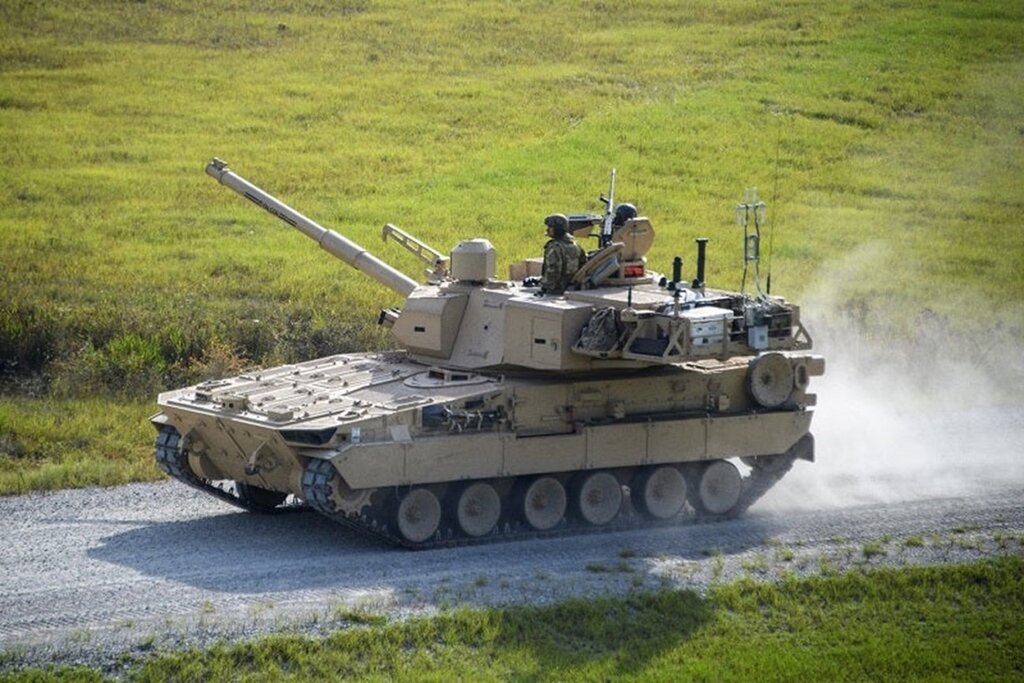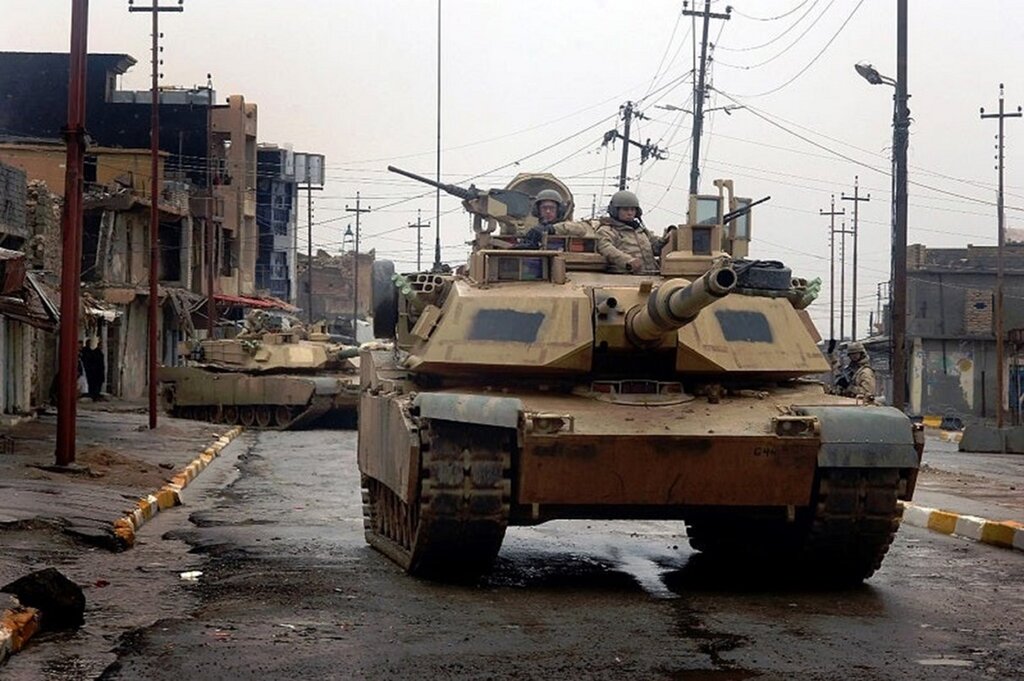Feature
M10 Booker – filling an enduring gap
With a combination of agility and firepower, the M10 Booker is the US Army’s long-awaited answer to a gap in its force structure for armoured, mobile fires. John Hill reports.

The M10 Booker fills an enduring capability gap in the US Army’s force structure. Credit: General Dynamics Land Systems
For some time, the US Army’s Infantry Brigade Combat Teams – or light ground forces – have lacked a vehicle capable of providing armoured, mobile, direct fires. This enduring gap in the US Army’s capability will be filled by the M10 Booker.
This little-known platform is making great headway toward fielding, with the US Department of Defense (DoD) allocating $297m on 15 April 2024 for long term technical support until 2029, as the programme nears initial operating capability in the 2030s.
A relatively new platform due to enter the army’s portfolio, Booker allows a troop formation to apply immediate, lethal, long-range direct fires against hardened enemy bunkers, light armoured vehicles, and dismounted personnel in machine gun and sniper positions; with all-terrain mobility and scalable armour protection; capable of conducting operations in all environments.
That’s a tall order and one that the industrial supplier, General Dynamics Land Systems (GDLS), is making real headway in developing.
Nevertheless, for all its virtues the M10 Booker has progressed in silence. Despite it filling an enduring capability gap, the platform is not mentioned at all in the 2024 Army Force Structure Transformation Initiative (AFSTI) – a white paper released in February that outlines how the service will adapt to meet a range of “new, complex operational environments” as the current security environment grows more uncertain around the world.
The US Army’s acquisition objective is for 504 systems, with officials reportedly noting that this number may vary slightly. Under current plans, four M10 battalions are to be fielded by 2030, with the bulk of the planned acquisition scheduled to be completed by 2035.
Timeline of the Booker
Originally the programme was designated the Mobile Protected Firepower (MPF) system when the DoD initially explored its options for a future MPF vehicle in the industry. In November 2017, the army issued a request for proposal for the engineering and manufacturing development phase.
On 17 December 2018, the US Army awarded two rapid prototyping contracts for MPF to GDLS and BAE Systems Land and Armaments. Each contract was not to exceed $376m. These two contracts required the delivery of 12 pre-production vehicles (from each vendor) for developmental and operational testing, as well as a soldier vehicle assessment.
During the assessment, soldiers evaluated GDLS and BAE M10 prototypes in a variety of operational scenarios. On 28 June 2022, the US Army announced the award of a $1.14bn contract to GDLS for the production and fielding of up to 96 M10 systems.
Delivery of the first low-rate initial production (LRIP) M10 system was expected in 19 months, and initial operational testing and evaluation are planned for the end of FY 2024. The first unit equipped is scheduled for Q4 2025, consisting of a battalion of 42 M10s.

An M10 Booker on the move, 14 June 2023. Credit: US Army via Wikimedia Commons
Each LRIP M10 system is expected to cost approximately $12.8m. Full-rate production M10 systems are expected to cost less than LRIP variants and may include modifications based on operational testing and evaluation results. The second phase of LRIP began in July 2023, when the DoD provided funds worth $258m for 26 more units.
GlobalData defence analyst Tristan Sauer observed that “this was a rather unique procurement programme in that it has already delivered several functional platforms on schedule, and the procurement decision came out of nowhere amidst the war in Ukraine. It is too early to tell what inevitable kinks and wrinkles will need to be ironed out, but it is going well so far.”
A light tank or a mini-Abrams?
Although the US Army has a precise role for the M10 Booker, it comprises a unique combination of different technologies that leave some, even within the service, at a loss when it comes to categorising this unique combat vehicle.
Sauer described the Booker’s role as an “armoured mobile fires platform that falls short of a main battle tank (MBT), which remains capable of supporting infantry and suppressing or destroying entrenched hostiles and battlefield fortifications”.
He added: “While it has been referred to as a ‘light-tank’, the Army plans to utilise it more as an infantry support platform much like infantry fighting vehicles (IFVs) and light armoured vehicles (LAVs).”
This makes an important point in understanding the distinctiveness of the M10 Booker. The platform provides greater firepower akin to a fully-fledged MBT, such as an Abrams – but on a smaller scale, yet it is too heavy to be a light tank.

US Army M1A2 Abrams MBTs manoeuvre in the streets as they conduct a combat patrol in the city of Tall Afar, Iraq, 3 February 2005. Credit: US Army via Wikimedia Commons
The Booker shares many components with the Abrams. Both are fully tracked vehicles, they carry a four-person crew, a 360° turret, a large main gun, and a thermal viewer for the commander that allows visibility at night and in multiple directions.
However, Booker weighs 42 tonnes, about half the weight of the latest M1A2 Abrams SEPv3 MBT. This allows the combat vehicle to be more readily deployable by airdrop and by transport aircraft than the Abrams.
When it comes to protection, the Booker’s armour is less survivable than the Abrams’, which is designed to protect the hull and turret from threats such as improvised explosive devices – a common method of asymmetric warfare the US Army faced in Afghanistan.
Moreover, the Booker employs a 105mm M35 main gun. This is smaller than the Abrams’ 120mm M256 smoothbore gun, but more powerful than the 25mm cannon used by the M2/3 Bradley IFV.
Caption. Credit:

General Sir Chris Deverell, former UK Joint Forces Commander, recently appointed as Goldilock’s Strategic Adviser for Defence. Credit: Goldilock.
The biggest rare earth mines are located in China, and this source of domestic production has helped drive Chinese dominance
Gavin John Lockyer, CEO of Arafura Resources
